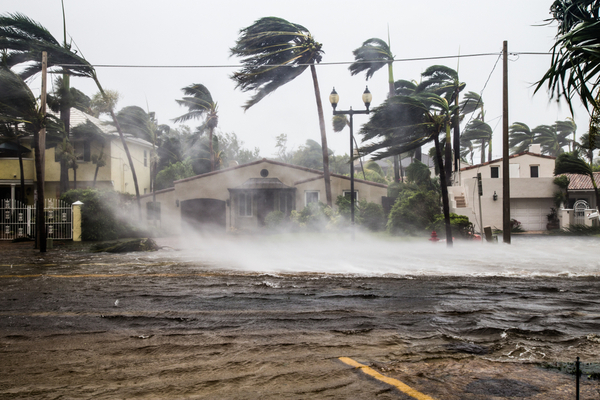Temperatures may be starting to drop in the U.S. as autumn kicks into full swing, but hurricane season is far from over.
As ABC News reports, meteorologists state that although the peak of the Atlantic hurricane season has passed (it’s official end date is November 30), the potential for strong storms to develop in the Atlantic basin is still imminent — even beyond that date.
Last week there were two systems identified in the Atlantic Basin, but neither were considered a threat to the mainland United States, or expected to form into the next named storm. The next named storm will be “Nadine,” states Marshall Shepherd, director of the Atmospheric Sciences Program at the University of Georgia and former president of the American Meteorological Society.
Wind shear from a current cold front in the eastern U.S. is responsible for warding off the development of tropical cyclones to the south, says Jennifer Francis, an atmospheric scientist at the Woodwell Climate Research Center. “It tends to prevent storms from forming, and it can rip storms apart,” Francis said.
The peak of the Atlantic hurricane season is Sept. 10, according to the National Hurricane Center, but the heavy activity came later this year, with Hurricane Helene forming on Sept. 24 and Hurricane Milton on Oct. 5, both making landfall on the west coast of Florida.
Tropical systems that develop in November tend to be more in the western part of the tropical Atlantic, including the Western Caribbean and the Gulf of Mexico, Francis said. “There’s nothing on the horizon, which is good news,” Shepherd said. “We need a break.”
However, the record warm ocean temperatures could increase the likelihood of a tropical cyclone to form, Francis said. Temperatures in the Atlantic, Caribbean and Gulf of Mexico “are all running a fever,” she said. “So any storm that does form will have plenty of fuel to draw from the ocean,” she said.
The forecast is currently clear, but conditions for a tropical cyclone to develop are going to become much more favorable by the end of October due to a shift in upper level winds, Francis said. While rare, hurricanes have developed outside of the traditional hurricane season in the past, records show.
In December 2005, Hurricane Epsilon and Tropical Storm Zeta formed in the Atlantic Basin — after the official hurricane season had concluded. Hurricane Alex in 2016 was an “unusual” tropical cyclone to form in the month of January, according to NOAA. “People should remain diligent and always sort of have in the back of their mind what their plans would be,” Shepherd said.
In addition, people should not underestimate the destructive power of a heavy rainstorm during hurricane season, Shepherd said. “Don’t underestimate the power of a strong storm with a lot of rain,” Shepherd said.
Helene weakened to a tropical depression by the time it caused catastrophic flooding in Asheville, North Carolina, on Sept. 27. What is now known as Superstorm Sandy was no longer a tropical cyclone when it made landfall in New Jersey on Oct. 29, 2012, causing widespread destruction in the Northeast.
—
Photo Credit: FotoKina / Shutterstock.com
